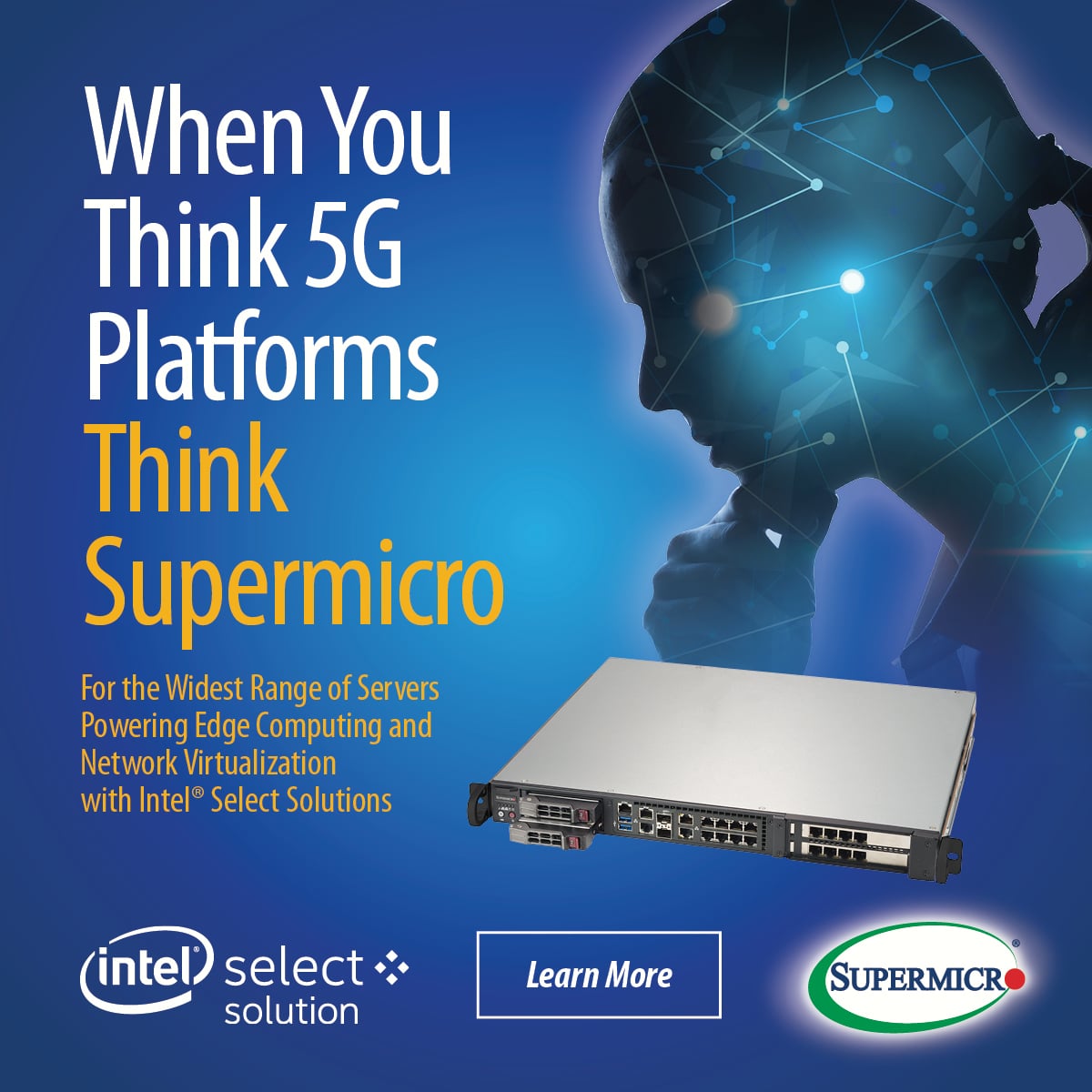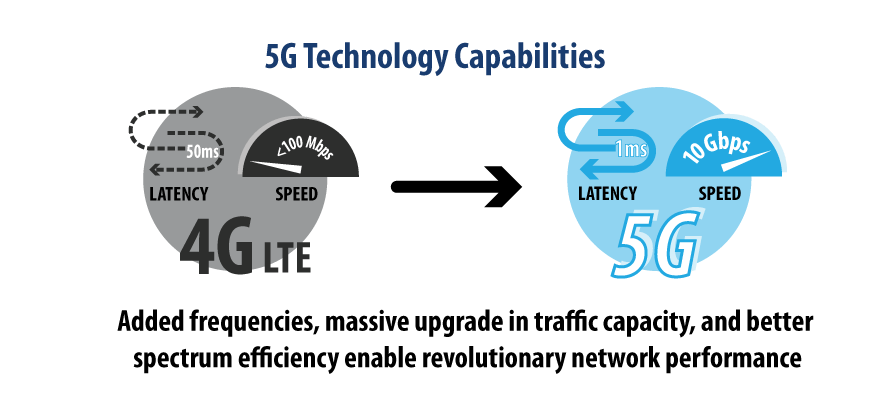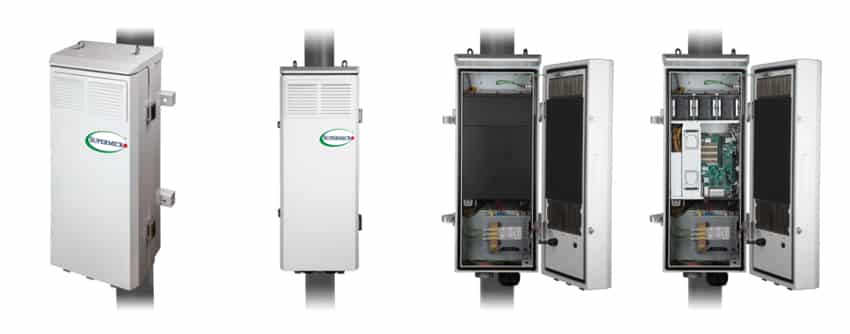The promise of fifth generation (5G) wireless networks has been dangled in front of businesses for years. Large IT vendors and mobile carriers have been promising next-generation solutions that are poised to enable dozens of new use cases that will transform the enterprise. Finally, at the end of 2019, some of the power of 5G began to unlock as carriers began offering service in select markets.
The promise of fifth generation (5G) wireless networks has been dangled in front of businesses for years. Large IT vendors and mobile carriers have been promising next-generation solutions that are poised to enable dozens of new use cases that will transform the enterprise. Finally, at the end of 2019, some of the power of 5G began to unlock as carriers began offering service in select markets.
From a practical perspective, the benefits of 5G can be boiled down to a simple statement. 5G offers increased bandwidth to devices. In best case scenarios this can mean gigabit download speeds, but more typically the hope is for a few hundred megabits per second. Whatever the case, businesses are on the verge of being able to not only accomplish mission critical tasks more quickly, but there is also an entire world of new opportunities that can be leveraged by organizations that are forward thinking enough to take advantage of them. One of these opportunities is not just edge computing, but specifically, outdoor edge computing.
While we think about 5G as a carrier problem, they have to modernize their entire delivery network, it’s important to understand that some organizations can run their own private networks for secure communications. In use cases like military, oil and gas exploration and others, there may either be no public network to connect to or there is a clear need for increased security. Under these circumstances, many more organizations can benefit from capabilities of 5G. In either case, the rules surrounding how 5G networks are put together are a little different from existing infrastructure is supported. For this reason, new hardware solutions have to be developed to address these changing needs. Supermicro, in conjunction with partners like Intel®, has developed an entire suite of servers and infrastructure dedicated to these needs.
One of the key reasons 5G is faster than current networks is due to reduced latency in the round trip path data takes from the service provider, to the device, and back to the service provider again. To enable this lower latency, existing tower infrastructure needs to be modernized. Because 5G often uses higher frequency bands, there is a shorter transmission distance capability, which translates into a need for more 5G antenna sites. At the same time 5G is hitting the market, carriers are also going through a major overhaul in their infrastructures. This change is highlighted by the broad adoption of virtualization and containers to allow for a more distributed and adaptable network.
The Need for Outdoor Edge Computing
Building traditional towers and securing the necessary land to do so, isn’t scalable when it comes to 5G. Supermicro has recently released a unique solution to this problem, an all new Pole Server. The first of its kind edge server uses an environmentally-hardened IP65 enclosure with servers that run on Intel® Xeon® D or 2nd Gen Intel® Xeon® Scalable processors. Expansion capability takes the form of three PCIe slots and support for a range of storage formats and form factors, including SSDs in both M.2 and EDSFF form factors. The servers are configurable and ready to stand up to the harsh environments that 5G antennas experience as they rarely have any shelter from the elements. While the overall Pole Server solution is new, the units are based on existing Supermicro edge server building blocks, like the popular E403.
To enable a wide variety of use cases that 5G connectivity enables, the new Pole Servers support GPUs and FPGAs in the PCIe expansion slots. This support gives this family of edge servers the ability to excel in servicing emerging use cases like real-time edge AI inferencing. Of course the hardware is also well-suited for more traditional tasks like supporting content delivery networks or acting as a repository for surveillance video. Further, because the Pole Servers are based on commonly understood Intel® x86 architecture, all of these emerging use cases are handled by equipment that’s easy to support and service, reducing management overhead.
Overview of the SuperServer E403-9D-16C-IPD2 Key Specifications
- Intel® Xeon® D or 2nd Gen Intel® Xeon® Scalable processors
- Three PCI-E expansion slots for GPU or FPGA accelerator cards
- 4 DIMM Slots, up to 512GB DDR4
- 4 2.5” SATA drive bays
- M.2 boot drive
- 4 10G SFP+ LAN ports
- 9 RJ45 Gigabit Ethernet LAN ports
- 1 RJ45 Dedicated IPMI LAN port
- Supports virtualization and containers
- Dimensions: 319 x 821 x 258mm (12.56 x 32.31 x 10.16″)
- Weight: 46 kg/101.5 lbs
- Operating temp: -40°C to +50°C (depending on configuration)
- Redundant power supply, fans and sensors
- Ruggedized for outdoor telecom use: IP65, GR-487-CORE, and GR-3108-CORE compliant
- 300W Heater and High-Efficiency Heat Exchanger
- Lockable buckles and intrusion detection
Of course these towers need to be able to connect back to the core data centers as well, where the 5G opportunity is entirely different. Within the datacenter, carriers need solutions to address flexibility in storage and network. Much of this is happening at the same time as virtualization is penetrating the core data centers of carriers, in favor of proprietary solutions. In these cases, Supermicro is well positioned with their existing enterprise solutions like the SuperBlade and BigTwin platforms. The SuperBlade has a long history of adoption in the enterprise datacenter, offering an extremely dense compute platform. In our lab, we’ve seen the BigTwin a number of times: it’s a configurable multi-node server that’s perfect for software-defined storage, or hyperconverged infrastructure that delivers on the promise of flexibility in handling modern workloads.
In addition to hardware, Supermicro is part of the industry’s move to non-proprietary hardware platforms like x86 servers and the growing adoption of standardized system interfaces. Supermicro is part of the O-RAN Alliance, which promotes a cloud-native, open 5G RAN architecture for the evolution of 4G to 5G networks. Further Supermicro offers fully validated Intel® Select Solutions to help speed adoption of these technologies.
Concluding Thoughts
As businesses start to take advantage of the bandwidth 5G can provide, it’s going to be critical that carriers are using the most advanced technologies to deliver these business critical services. With their new 5G solutions and advanced data center portfolio, Supermicro has not only created a complete portfolio of offerings, but delivered specialty solutions as well that other large IT vendors simply don’t have.
This 5G portfolio is clearly punctuated by the brand new Pole Server. With the Pole Server Supermicro is flexing their engineering muscles by delivering a clear vision for what outdoor edge computing can be. While edge computing needs for 5G are widely discussed by the industry, Supermicro has put a stake in the ground with this effort, or perhaps more aptly, a server on an antenna in the ground. Either way, Supermicro is taking a commanding leadership position in the outdoor edge use case with this solution. Further, the solution is based on x86 standard hardware and developed in conjunction with Intel®, to ensure reliability and performance at the edge. This is vitally important as carriers migrate away from proprietary solutions, to standards-based solutions.
The needs for 5G infrastructure are diverse, we’ve focused largely on the need at the outdoor edge, but Supermicro has been providing data center solutions for over 25 years. Their range of rackmount servers, blade servers, multi-node servers for SDS/HCI and traditional edge servers mean that Supermicro has a solution for all components of the 5G opportunity. As carriers and those in need of a private 5G network look for a partner for this journey, Supermicro stands out by delivering innovative solutions for these emerging needs.
Intel® Select Solutions with Supermicro for 5G




